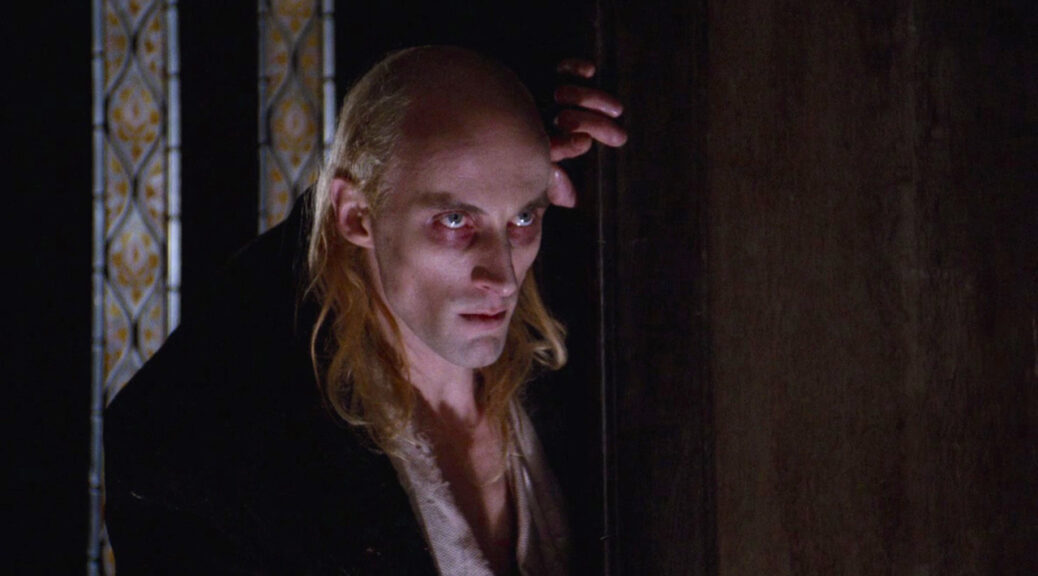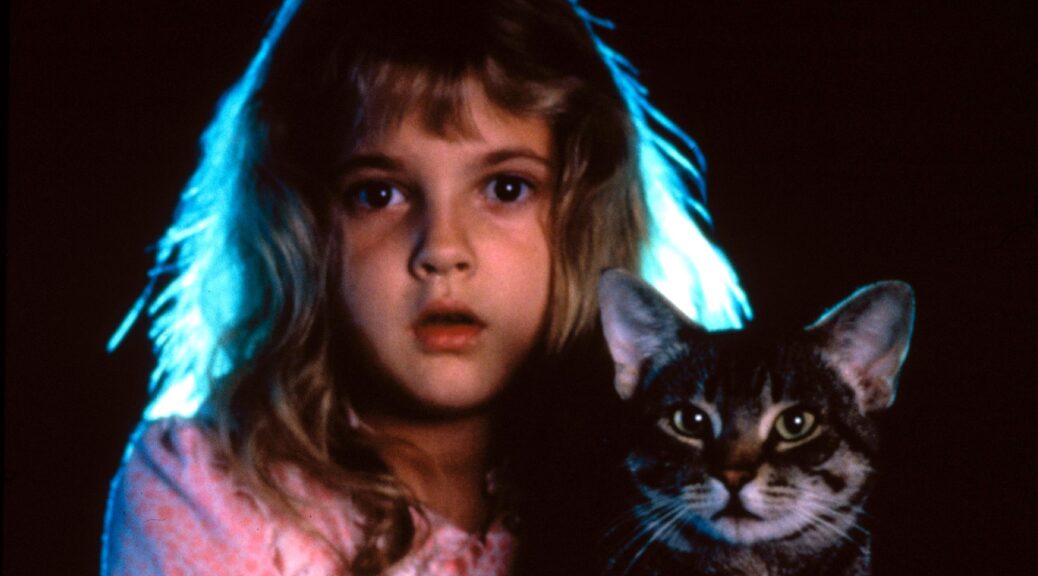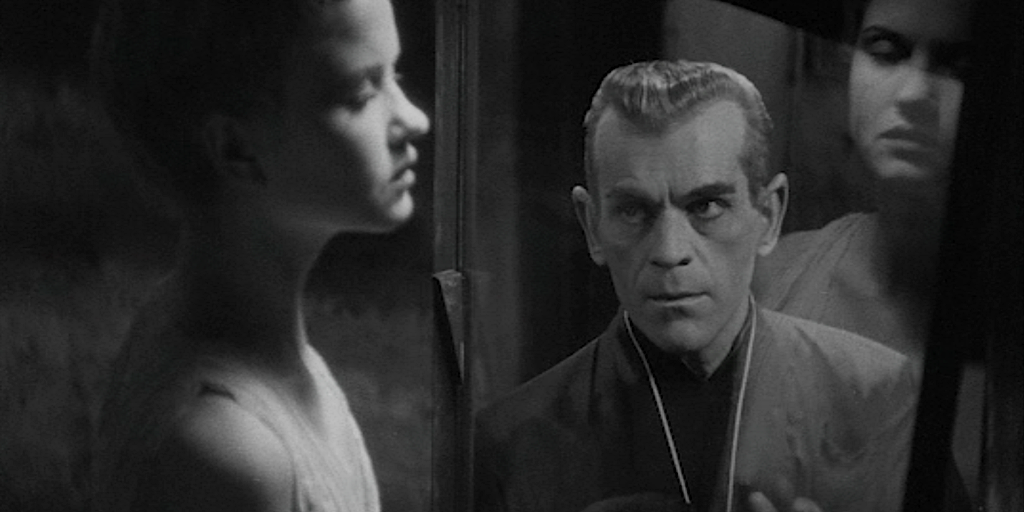It’s one of the oldest tropes in horror: an unexpected knock at the door. Maybe the visitors are in danger: The Texas Chain Saw Massacre, The Human Centipede, The Old Dark House and countless others. Or, maybe it’s the folks inside who should be afraid: Knock, Knock; Brimstone and Treacle. For our 10th anniversary special, we count down the best “unexpected guest” horror.
5. The Eyes of My Mother (2016)
The Eyes of My Mother will remind you of many other films, and yet there truly is no film quite like this one.
First time feature writer/director Nicolas Pesce, with a hell of an assist from cinematographer Zach Kuperstein, casts an eerie spell of lonesome bucolic horror.
Shot in ideal-for-the-project black and white, an Act 1 event could come from any number of horror films. A mother looks out her window to see her young daughter, playing alone in the front lawn, talking with a stranger. There is something clearly wrong with the stranger, and things take a bad turn. But for Pesce, this simple, well-worn set-up offers endless unexplored possibilities. Because this bad man doesn’t realize that the isolated farm family he’s come to harm is very comfortable with dissection.
4. The Strangers (2008)
“Is Tamara home?”
Writer/director Bryan Bertino creates an awful lot of terror beginning with that line.
A couple heads to an isolated summer home after a wedding. It was meant to be the first stop on their life together, or so we gather, but not all worked out as James (Scott Speedman) had planned. As he and what he’d hoped would be his fiancé, Kristen (Liv Tyler), sit awkwardly and dance around the issue, their very late night is interrupted by a knock and that immediately suspicious question.
Bertino beautifully crafts his first act to ratchet up suspense, with lovely wide shots that allow so much to happen quietly in a frame. This is a home invasion film with an almost unbearable slow burn.
3. Funny Games (1997, 2007)
A family pulls into their vacation lake home, and are quickly bothered by two young men in white gloves. Things, to put it mildly, deteriorate.
Writer/director Michael Haneke begins this nerve wracking exercise by treading tensions created through etiquette, toying with subtle social mores and yet building dread so deftly, so authentically, that you begin to clench your teeth long before the first act of true violence.
But it is the villains who sell the premise. Whether German actors Arno Frisch and Frank Giering or Americans Brady Corbet and Michael Pitt for his 2007 English language remake, the bored sadism that wafts from these kids is seriously unsettling, as, in turn, is the film.
2. The Rocky Horror Picture Show (1975)
I would like, if I may, to take you on a strange journey.
Two young, ordinary, healthy kids left Denton that fateful evening on a night out. It was a night out they were going to remember for a very long time.
Brad Majors (asshole) and Janet Weiss (slut) get themselves in a bit of a pickle on a rainy night and need to seek a telephone at that castle they past a few miles back. I think you know the rest.
1. The Black Cat (1934)
Rocky Horror owes a tremendous debt to Edgar G. Ulmer’s bizarre horror show. The film – clearly precode – boasts torture, tales of cannibalism, and more than the hint of necromancy.
Plus Bela Lugosi and Boris Karloff?! What is not to love?
Loosely based on Poe’s The Black Cat – so loose in fact that it bears not a single moment’s resemblance to the short – the film introduces Lugosi’s Dr. Vitus Werdegast. He’s come to seek vengeance on Karloff’s mysterious Hjalmar Poelzig, if only Werdegast can overcome his all-consuming terror of cats!


